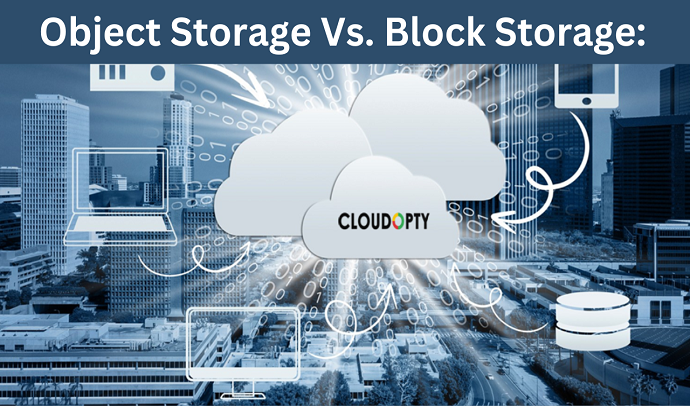Download PDF
Choosing The Right Fit For Your Workload
Introduction
In the realm of cloud storage, two prominent contenders, object storage and block storage, offer distinct approaches to handling data. Understanding their differences and assessing your workload’s requirements is essential for making an informed choice. In this blog, we’ll delve into the characteristics of object storage and block storage, helping you determine which option aligns best with your specific workload needs.
Object Storage:
Scalable Simplicity Object storage is designed to handle vast amounts of unstructured data efficiently. Instead of using a file hierarchy, it organizes data into containers, each containing unique identifiers called “objects.” This architecture makes object storage highly scalable and ideal for applications with massive data volumes.
 Block Storage:
Block Storage:
Precision and Performance Block storage divides data into fixed-sized blocks and stores them individually. It’s akin to a traditional hard drive, offering precise control over where data is stored on the storage media. This characteristic makes block storage suitable for applications that demand high performance and require direct access to storage devices.
When to Choose Object Storage:
- Scalability and Large Data Sets: Object storage shines when dealing with large volumes of data that need to be easily expanded. Use it for applications like content distribution, backup archives, and data lakes.
- Flexibility and Metadata: If your workload requires associating metadata with each piece of data, object storage’s ability to store metadata alongside objects is a significant advantage. This is valuable for content management systems, multimedia applications, and IoT data repositories.
- Global Distribution: Object storage is well-suited for scenarios where data needs to be accessed globally by diverse users. Its distributed architecture ensures efficient content delivery.
- Cost-Effective Archiving: Object storage’s cost-effectiveness makes it a prime choice for long-term data retention and archiving.

When to Choose Block Storage:
- High-Performance Applications: If your workload requires low- latency access and fast read/write operations, block storage is the better option. Examples include databases, virtual machines, and real-time analytics.
- Structured Data: Applications that manage structured data, such as databases and file systems, often benefit from the direct control and precise data placement that block storage provides.
- Data Integrity and Consistency: Block storage’s focus on individual data blocks ensures data integrity and consistency, making it suitable for critical applications that demand reliability.
- Customization and Encryption: For applications requiring encryption, block storage offers the ability to manage encryption and decryption processes at the block level.

Conclusion
 Choosing between object storage and block storage requires a comprehensive understanding of your workload’s characteristics and demands. Object storage excels in scalability, flexibility, and cost- effective archiving, while block storage offers precision, high performance, and data integrity. Whichever option you choose, it’s crucial to align it with your workload’s requirements for optimal performance, cost-efficiency, and data management. Consider leveraging the capabilities of Cloudopty, a platform like cloudopty.com, to assist in evaluating your storage needs and making informed decisions that align perfectly with your organization’s goals.
Choosing between object storage and block storage requires a comprehensive understanding of your workload’s characteristics and demands. Object storage excels in scalability, flexibility, and cost- effective archiving, while block storage offers precision, high performance, and data integrity. Whichever option you choose, it’s crucial to align it with your workload’s requirements for optimal performance, cost-efficiency, and data management. Consider leveraging the capabilities of Cloudopty, a platform like cloudopty.com, to assist in evaluating your storage needs and making informed decisions that align perfectly with your organization’s goals.
